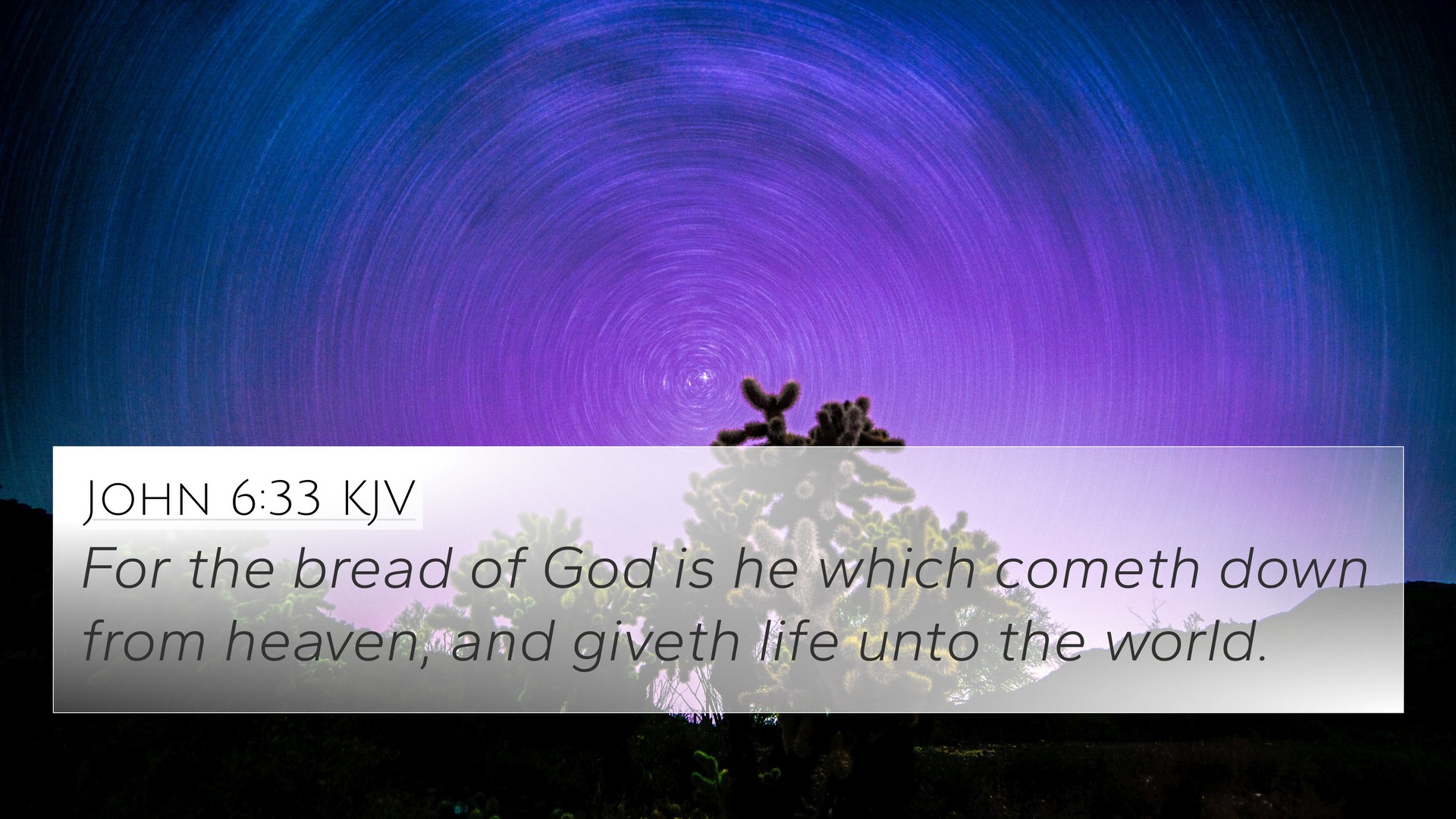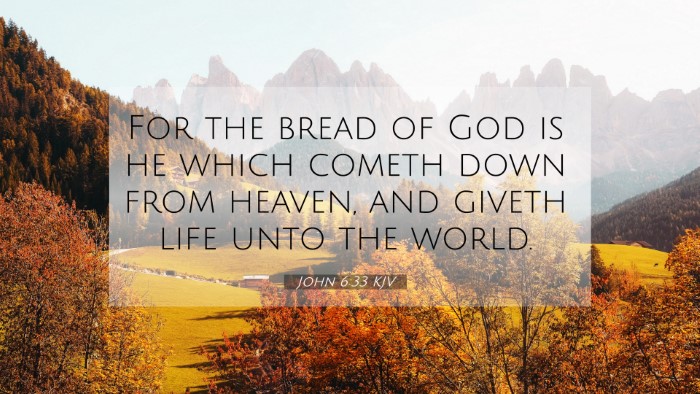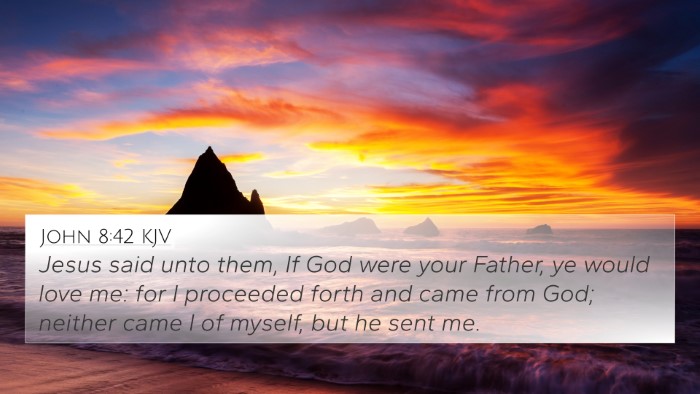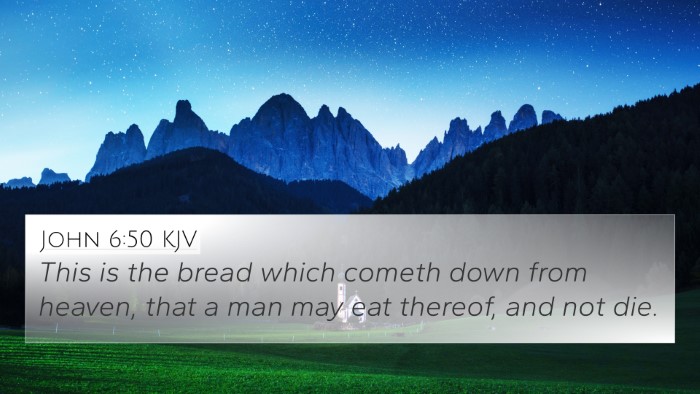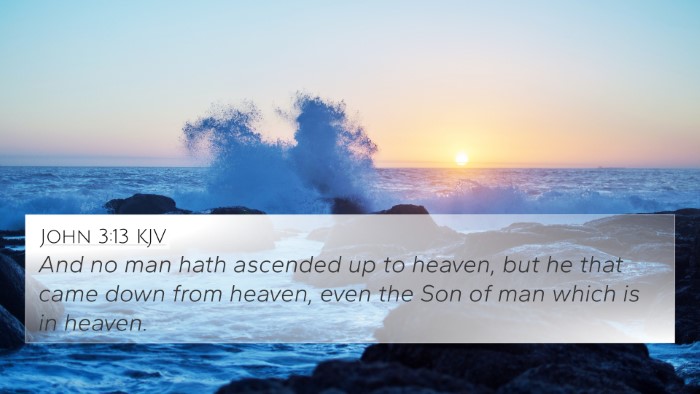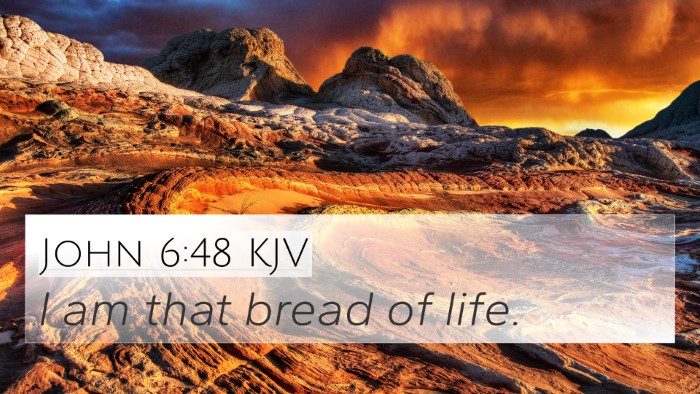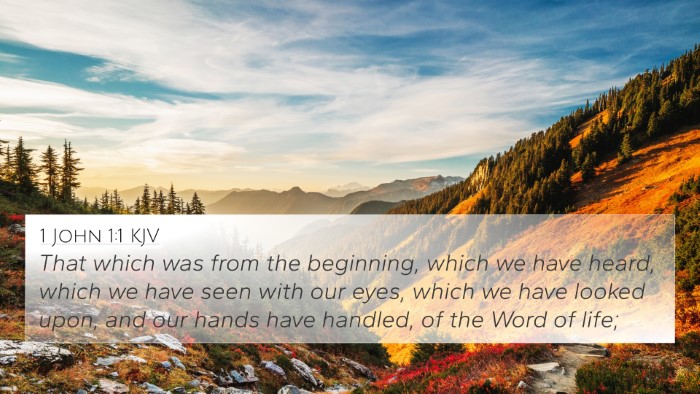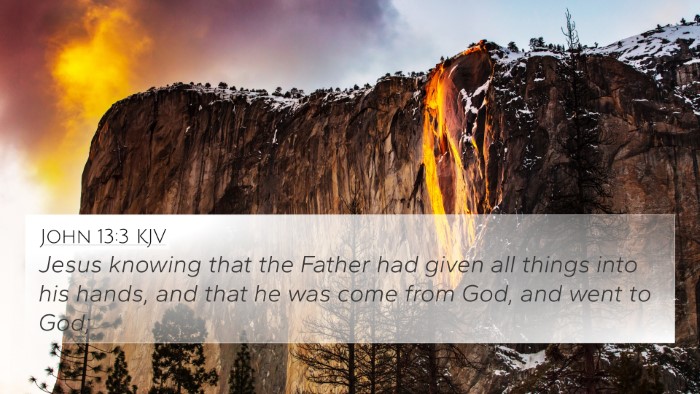Understanding John 6:33
John 6:33: "For the bread of God is he which cometh down from heaven, and giveth life unto the world."
This profound statement made by Jesus offers deep insights into His identity as the sustainer of life. To fully appreciate this verse, we can draw from the rich analyses provided by public domain commentaries, especially those of Matthew Henry, Albert Barnes, and Adam Clarke.
Meaning and Context
In the context of John 6, Jesus has just performed the miracle of the feeding of the five thousand, which leads to a discussion of the spiritual sustenance he provides.
- Matthew Henry: Henry emphasizes that Jesus is the true bread that comes from God, contrasting with the manna given to the Israelites, which only sustained them temporarily. Jesus provides eternal life, symbolizing a higher spiritual nourishment.
- Albert Barnes: Barnes highlights that this bread represents not just physical sustenance but also the spiritual salvation that Christ offers. He insists that understanding Jesus as this bread transforms how we seek fulfillment and life itself.
- Adam Clarke: Clarke connects this verse with themes of divine provision, noting that Christ, as the bread from heaven, came to give eternal life, thus emphasizing the connection to the broader theme of God's care for humanity.
Cross-References with John 6:33
To deepen our understanding of this verse, we can explore several Bible verse cross-references that illuminate the connections and thematic parallels within scripture:
- Exodus 16:15: The Israelites receiving manna in the wilderness, symbolizing God's provision.
- John 4:14: Jesus talks about the living water that satisfies forever, much like the bread of life.
- John 6:35: Jesus calls himself the bread of life directly, explaining that those who come to Him will never hunger.
- Matthew 4:4: Jesus states that man shall not live by bread alone, indicating the necessity of spiritual sustenance.
- 1 Corinthians 10:3-4: All Israel drank from the spiritual rock, which is Christ, linking physical and spiritual sustenance.
- Revelation 2:17: The hidden manna promised to the faithful, connecting to the divine sustenance offered through Christ.
- Isaiah 55:1: An invitation to come and eat freely, symbolizing God's generous offer of salvation.
Thematic Bible Verse Connections
Through these Bible verse parallels, we can draw connections to central themes of God's care, sustenance, and salvation throughout the scriptures. Each reference enriches our understanding of Jesus' role as the bread of life:
- Divine Sustenance: Just as manna physically sustained the Israelites, Jesus offers a spiritual life that transcends mere physical existence.
- Salvation and Eternal Life: Each of these verses reinforces the promise that embracing Jesus grants us eternal fulfillment and life.
- God's Provision: The consistent theme of God providing for His people weaves through both Testaments, culminating in Christ.
How to Use Bible Cross-References
When studying texts like John 6:33, utilizing a Bible cross-reference guide can enhance your understanding. Here are a few methods:
- Utilize a Bible concordance to find related themes and terms.
- Engage in cross-reference Bible study by noting any verses that share similar concepts.
- Consider the broader context of both Testaments to identify connections between Bible verses.
Conclusion
John 6:33 serves as a profound reminder of Christ’s identity as the ultimate sustainer of life, linking the experiences of biblical history with the spiritual truths He embodies. By exploring the interconnections and cross-references within scripture, believers deepen their understanding of God’s redemptive plan and the sustenance available through faith in Christ.
In summary, drawing from scriptural cross-referencing not only enriches our interpretations but also connects us with the historical and spiritual significance of Jesus as the bread of life, echoing through eternity.
